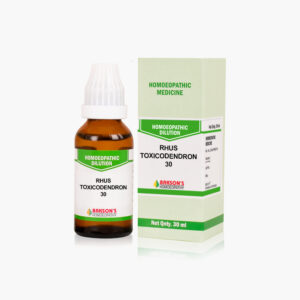What is Back Pain?
Back pain is one of the most common complaints for which people visit the doctor or miss work due to disability. Lower back pain or Lumbago is not a disease but a symptom of several types of disorders. It can present as a dull aching in back, a stabbing or shooting pain radiating down the leg to foot, an inability to stand straight or as a decreased range of movement and restricted flexion of back.
Types of Low back pain
- Local Pain: caused by injury to pain sensitive structures that compress or irritate sensory nerve endings. Pain is located near the affected part of the back.
- Pain referred to the back: pain with abdominal or pelvic origin which is unaffected by posture.
- Pain of spine origin: it is restricted to the back or referred to lower limbs or buttock.
- Radicular back pain: it radiates from spine to leg in specific nerve root territory. Cough, sneeze, lifting heavy objects or straining may elicit pain.
- Pain associated with muscle spasm: accompanied with dull or aching pain in the Para spinal region and abnormal posture.
Risk Factors
Factors that put an individual at greater risk of developing back pain are the following:
- Age more than 30 or 40 years.
- Lack of exercise
- Excess weight
- Diseases like arthritis and cancer
- Improper lifting technique
- Psychological conditions like depression and anxiety
- Smoking
Causes
Back pain is a vast topic with many potential causes that are divided into four primary categories:
- Mechanical: Includes back pain due to injury to the spine, intervertebral discs, or soft tissues and fractures such as spondylolisthesis. Lumbago is an acute back pain or a strain. Disc herniation is a common type of traumatic back pain. Pregnancy is also a mechanical cause of back pain.
- Degenerative: Osteoarthritis of the spine include facet joint osteoarthritis, sacroiliac joint osteoarthritis, spinal stenosis, and degenerative disc disease.
- Inflammatory: This is caused due to inflammatory (seronegative) spondyloarthropathies such as ankylosing spondylitis. Sacroiliitis is most commonly seen.
- Infectious: Infections of the spine, discs, epidural abscesses, or muscular/soft tissue abscesses.
Conditions that can commonly cause back pain are:
- Muscle or ligament strain: Sudden awkward movements, over-activity or incorrect lifting of heavy objects can cause strain to the back muscles and result in pain.
- Intervertebral disk prolapse: A prolapsed or herniated disc occurs when the nucleus pulposus ruptures out from its enclosed space due to injury to the outer fibres of intervertebral disc and can cause compression to the spinal nerves. It presents with back or neck pain, numbness, or tingling in extremities, weakness, pain running down the limbs, etc.
- Osteoarthritis: It is the most common type of arthritis which can affect the hip and spine to cause backache. There is stiffness after rest or in the morning, joint movement restriction, joint instability and deformity and crepitation in the joint.
- Osteoporosis: Osteoporosis makes the bones porous and brittle making it easier to develop painful fractures of spinal vertebrae.
- Other causes are:
- Degenerative spondylolisthesis
- Cauda equina syndrome
- Fungal or bacterial infection of spine
- Renal stones or kidney infections
Management
Measures that can help prevent and ease back pain are:
- Avoid heavy lifting
- Strengthen the core muscles
- Improve posture
- Regular stretching can help improve circulation
Warning: Above information provided is an overview of the disease, we strongly recommend a doctor’s consultation to prevent further advancement of disease and/or development of complications.
Disclaimer: The information provided herein on request, is not to be taken as a replacement for medical advice or diagnosis or treatment of any medical condition. DO NOT SELF MEDICATE. PLEASE CONSULT YOUR PHYSICIAN FOR PROPER DIAGNOSIS AND PRESCRIPTION.



 Login
Login













